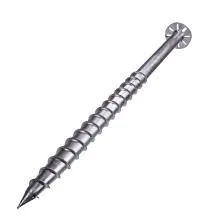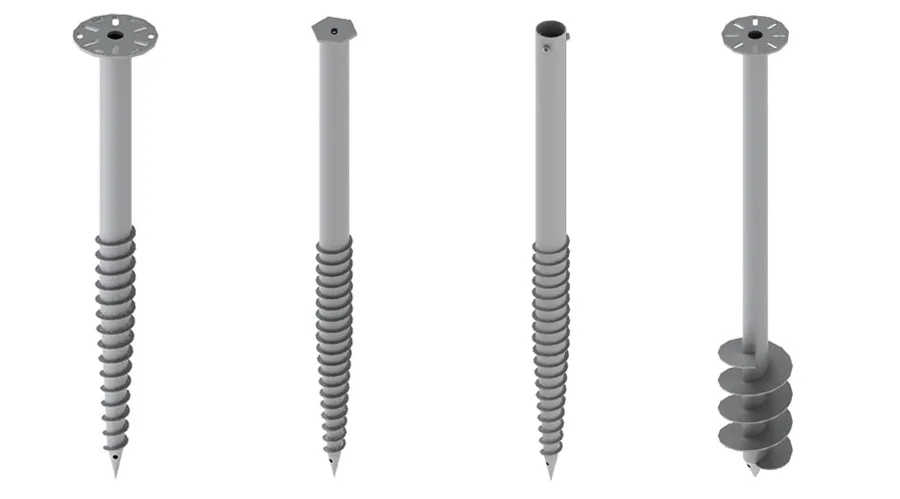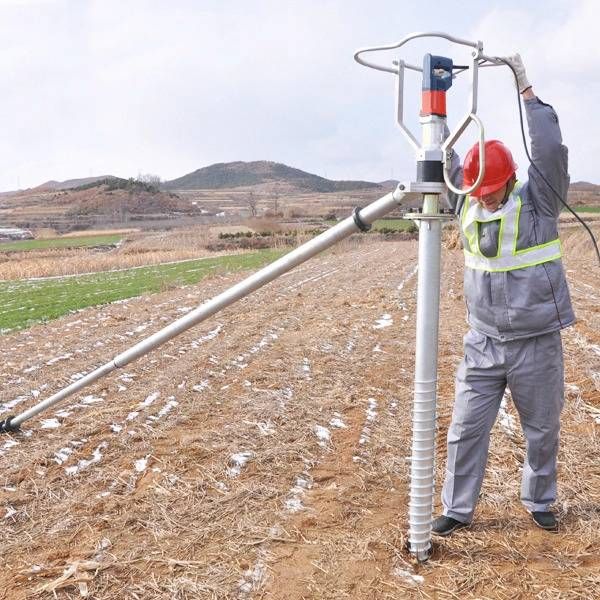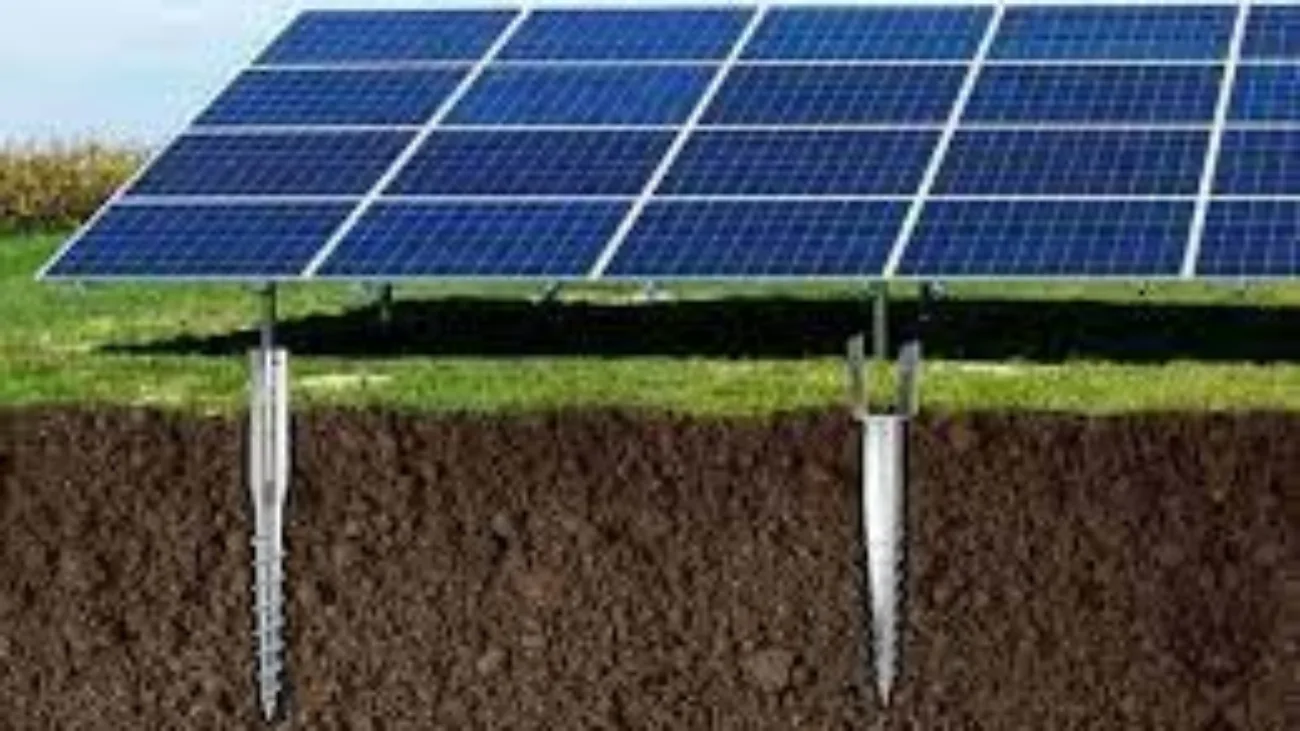
I. Introduction to Ground Screws for Solar Arrays
Ground screws are an increasingly popular mounting solution for solar arrays, especially ground-mounted solar photovoltaic (PV) systems. As an alternative to concrete foundations, ground screws offer several advantages:
- Faster installation times
- Reduced costs
- Minimal ground disturbance
Helical anchors and ground screws consist of metal piles with screw-like flanges near the tip. They are screwed into the ground using special equipment to provide sturdy anchoring for solar module racking.
The main benefits of using ground screws over traditional mounting methods like cement slabs include:
- Less invasive – Requires little excavation or concrete pouring
- Reusable – Can be removed and reused if arrays are reconfigured
- Faster – Install hundreds of mounts per day vs waiting for concrete to cure
- Flexible – Adjustable to uneven terrain; suitable for slopes
When to Use Ground Screws
Ground screws are recommended for:
- Solar farms and large-scale ground-mounted installations
- Sites with environmentally sensitive areas where minimal ground disturbance is preferred
- Areas prone to freezing and thawing which can cause ground shift
They may not be suitable for very rocky areas or soils with large boulders.
Installation Process
Installing helical piles for solar arrays involves:
- Optional soil testing to determine depth
- Starting hole excavation if needed
- Securing mount to rotary hydraulic drive system
- Spinning ground screw to required depth
Equipment needed includes:
- Rotary drive system capable of producing high torque
- Mounting poles of various lengths
- Soil testing tools (for friction and density analysis)
Proper Embedment depth depends on:
- Soil density
- Frost line depth
- Wind and seismic factors
| Soil Type | Average Depth |
| Loose sand | 8-15 ft |
| Compact clay | 5-10 ft |
| Firm bedrock | 15-30 ft |
Using ground screws for mounting solar arrays can simplify the installation process and reduce overall project costs. Their flexibility and low environmental impact make them an ideal solution for solar farms and ground-mounted PV systems.
II. Types of Ground Screws
There are two main types of screw-based mounts used for anchoring solar arrays:
Helical Anchors/Piers/Piles

Helical anchors consist of a central shaft with one or more helical bearing plates welded near the tip. The spiraling flanges allow them to screw into the soil. Key features:
- Come in various lengths to match soil conditions and embedment requirements
- Can have single or multiple helical flanges
- Available in different shaft diameters and flange sizes
- Offer tension and compression capacity
Ideal for: Sandy soils, high water tables
Ground Screws

Ground screws resemble large wood screws with a pointed, threaded tip. The spiraling thread pattern also makes them easy to install.
- Sharpened tip can penetrate compacted soils
- Threaded design displaces soil rather than removing it
- Work well even in rocky areas
Ideal for: Dense or rocky soils
| Type | Diameter | Lengths | Torque |
| Helical anchor | 2-6 in | 5-20 ft | 5,000+ ft-lbs |
| Ground screw | 4-12 in | 10-30 ft | 8,000+ ft-lbs |
Both styles can serve as wind and seismic anchors for solar racking. The choice depends on:
- Soil composition at site
- Design wind/seismic loads
- System size and panel weight
Professional engineers size the ground screws and specify embedment depth based on site soil analysis.
III. Installation Methods

Installing helical piles or ground screws requires specialized equipment to provide enough downward force and torque. Common machinery includes:
- Hydraulic rotary drivers – Generate high levels of torque (up to 10,000 ft-lbs) to screw anchors into soil. Some models offer vibration damping.
- Power auger drivers – Rotate and push the pile using an internal auger. Allows addition of pipe extensions.
- Tracked excavators – Excavators equipped with rotational heads on booms can grip and spin ground screws to depth.
Steps to Install Ground Screws:
- Mark screw positions according to engineer plans
- Core pilot hole if needed (denser soils)
- Position screw at correct angle
- Spin screw into ground until proper depth using installed torque values
- Level and test installation
- Attach solar racking
Other Equipment Needed:
- Testing devices – Measure torque values during installation
- Leveling tools – Verify proper angle and depth
- Compaction tools – Prepare ground surface
For solar farms installing hundreds of anchors, efficiency is important. Multi-screw hydraulic drivers can install 1-2 complete screws per minute in easier soils.
Proper training on machinery is critical to:
- Maximize productivity
- Ensure reliable, structurally sound installations
- Prevent environmental damage
IV. Advantages Over Other Methods
Compared to foundations like concrete piers or I-beams, ground screws offer superior performance for solar installations:
Faster Installation
- Install crews can screw hundreds of piles per day
- No excavation or concrete curing downtime
Lower Costs
- Minimal equipment needs
- Small crew size for rapid scaling
- No waste removal or concrete expenses
Reduced Environmental Impact
- Limited ground disturbance from small diameter holes
- No excavated soil disposal
- Landscape preservation around arrays
Flexible Siting
- Adjustable for uneven or sloped terrain
- Work around existing landscaping or infrastructure
Structural Reliability
- Engineered to withstand high wind/seismic loads
- Resist weathering, corrosion
- Offers tension capacity for uplift resistance
With faster, cheaper installations plus lower environmental impact, ground screws are an ideal mounting choice for most solar farm projects.
V. Disadvantages
While ground screws have many benefits for solar installations, there are some limitations:
Soil Compatibility
- Very dense or gravelly soils difficult to penetrate
- Loose sands provide insufficient grip without concrete base
Screw piles rely on soil friction and compression. Improper soils may require:
- Pre-drilling pilot holes
- Additional anchoring methods
- Concrete collars around piles
Depth Limitations
- Ideal max embedment depth around 30 feet
- Deeper soils require change in foundation type
Slope Limitations
- Most equipment can only handle up to a 30 degree slope
- Greater angles require terracing or custom machinery
Vibration/Noise
- Hydraulic drivers create noticeable vibration
- Not suitable for sensitive animal habitats
Higher Upfront Costs
- Rotary drivers and related equipment have significant costs
- Feasible mostly for large solar farms to offset capital
Ground screws work extremely well across many solar sites. However rocky, angled, or loose soil may favour other foundations like mini-piles or concrete piers.
VI. Cost Savings
Using helical piles and ground screws for anchoring solar racking can generate major cost reductions compared to cast-in-place concrete or steel beams:
Faster Installation Times
- Crews can install 500+ anchors per day with multi-anchor drivers
- No curing time compared to concrete
- Quickly scales to meet project deadlines
Reduced Materials Needed
- Minimal drilling equipment required
- Avoid formwork, rebar, concrete, cranes of slab/pier methods
- Small crew size possible for rapid scaling
Lower Site Prep Costs
- Limited excavation needed
- No hauling or spoil removal
- Preserves existing landscape features
Lower Transportation Costs
- Anchor diameters under 1 foot
- Easy to transport screws and lightweight equipment
- Reduce vehicle trips compared to concrete or steel
With quicker installations, reusable materials, and preservation of landforms, ground screws provide major budget savings over alternative mounting approaches.
VII. Environmental Factors
Compared to foundation solutions like concrete slabs, ground screws are much more eco-friendly:
Landscape Preservation
- Avoids extensive grading and earthworks
- Allows vegetation to remain and regrow
- Maintains site drainage patterns
Limited Ground Disturbance
- Narrow diameter minimally disrupts soil
- No trenching or excessive digging
- Reduces soil erosion risks
Wildlife Protection
- Low noise and vibration installation
- Leaves habitat intact under arrays
- Allows animal movement through site
Storm water Control
- Permeable design doesn’t increase runoff
- Enables rainwater infiltration
Sustainability
- Steel is recyclable
- Anchors can be reused on other sites
- Reduces use of concrete and carbon emissions
In addition, sites with potential contamination like landfills can use ground screws without digging into unhealthy soils. Their small footprint makes them ideal for environmentally sensitive solar farm locations.
Conclusion
Ground screws present an innovative mounting method for solar PV projects that offers:
- Faster installation with less manpower
- Cheaper overall costs than concrete or steel
- Minimal site impact for sustainability
Key advantages as anchoring foundations:
- Adjustable for sloped terrain
- High wind and seismic capacity
- Tension load resistance
- Rapid scalability
Ideal applications:
- Large solar farms
- Sites with frozen ground
- Landfill or brownfield locations
- Areas valuing wildlife conservation
Ground screw limitations:
- Very loose or shallow bedrock
- Extreme slopes over 30 degrees
Continuing trends show ground screws gaining favour over pile-driven posts or cast-in-place concrete:
With quicker, cheaper installation and lower environmental impact, ground screw mounting enables the renewable energy transition by easing deployment of ground-mounted PV systems. Their advantages make them a foundation pile suited for the coming decades of solar expansion.

